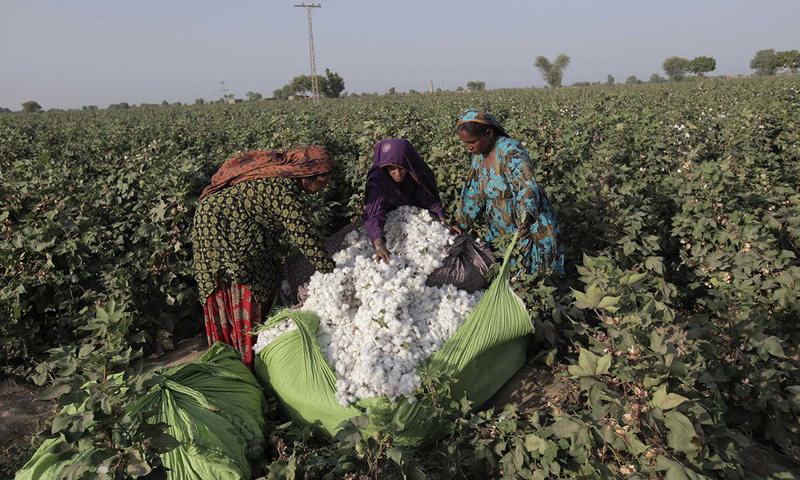Tracey Meyers
Retraced, a sustainable supply chain management solution, said it partnered with denim manufacturer Artistic Milliners to enable “bottom-up” traceability through blockchain-based technology for cotton picked from Pakistani farms — and the result will be greater transparency, fiber provenance, and increased empowerment for farmers in the region.
Pakistan-based Artistic Milliners is one of the world’s largest vertically integrated denim and apparel manufacturers. Its new partnership is part of the Milliner Cotton Initiative, which aids in the digitalization of more than 500 cotton farmers to ensure compensation for the delivery of high-quality cotton, the company said.
As the demand for sustainability is ever-increasing, traceability, naturally, has come front and center. To meet this demand, Artistic Milliners is offering an opportunity for brands and consumers to “Know-Your-Cotton” better. “The increased connectivity and digitalization [from the partnership] will help deliver authentic data throughout the value chain. This will ensure better cotton origin assurances, improved visibility of the value chain, and more awareness about the sustainable cotton journey,” the companies said.
Retraced’s solution allows for tracing and real-time tracking of cotton as it moves along each step in the value chain until its final transformation into apparel; but what’s so unique is that all of its value chain partners will be digitally connected, which allows them to exchange data on a single platform and work collaboratively toward a more transparent and sustainable supply chain, the brands added.
Both brands and consumers will be able to trace Milliner Cotton products back to their origin, allowing for a “full overview of the value chain and its production standards.” Its technology is built on Oracle’s Blockchain Cloud platform and Autonomous infrastructure, which ensures “greater data security, immutability, and reliability” for the brand’s cotton value chain.
Digitizing the cotton value chain in Pakistan is a lofty goal — but Retraced’s ability to track and follow the natural flow of materials in real-time makes it a possible reality.
The process is to distribute the Retraced application to all key stakeholders in the Rahim Yar Khan region of Pakistan’s value chain, which begins at the farm level. Each one of the 500 selected cotton farmers will be equipped with a mobile application for managing their cotton sowing, picking, and shipment to track the lifecycle of cotton to the ginner. The ginner — also equipped with the Retraced application — will be able to “digitally discern” between different cotton shipments and assess fiber quality through the technology.
In the final step, the tagged cotton will be sent to the Artistic Milliners facility in Karachi for in-house spinning, dyeing, weaving, and cut-make-trim, where it will continue to be traced via Retraced’s system integration. That same cotton thread will then be manufactured into denim fabric and apparel for clothing brands, but it doesn’t stop there — “the brands can, in turn, use the data to evaluate the apparel’s production standards and communicate the source of the clothing to their consumers,” the companies said.
Lukas Pünder, cofounder and chief executive officer of Retraced, said that “Transparency in cotton supply chains is long overdue and a necessary basis for ethical supply chain management, environmental sustainability or circularity. Often, cotton from up to 1,000 farmers from different continents is mixed in one single pair of jeans. And little is known about who, where and what happens.”
“Traceability is an industry-wide challenge, and only with a platform that connects everyone, we can address that. With Artistic Milliners’ MCI project, we are implementing real-time fiber tracing the way it should be — from the bottom up following the natural flow of the material. The objective of this project has to be to create the blueprint for fully digitalized traceability. It’s an exciting development for fashion.”


